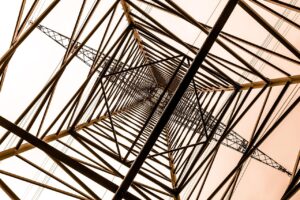China’s grid investment is projected to exceed ¥3 trillion this decade as the country works toward its dual-carbon goals, and the latest agreement between Shanghai Electric and Siemens positions both companies to capture a share of that momentum.
Formalized at the 8th China International Import Expo, the framework focuses on accelerating intelligent upgrades to low- and medium-voltage power system equipment—segments that are central to integrating renewables, managing distributed loads, and stabilizing increasingly complex grids.
The partnership comes at a time when China’s electrification rate continues to rise, driven by rapid deployment of solar, wind, and energy-intensive digital infrastructure. Low- and medium-voltage systems remain the bottleneck for efficient renewable absorption, particularly in provinces where curtailment persists. By targeting these layers of the grid, the collaboration aligns with national policy signals that emphasize digitalization and coordinated system planning. Siemens’ long-standing experience in grid automation and Shanghai Electric’s manufacturing footprint offer a complementary platform for these upgrades, though the agreement remains broad in scope and non-quantitative in its immediate commitments.
Shanghai Electric’s president Zhu Zhaokai frames the initiative as the next phase in a decades-long relationship that has already shaped China’s transmission and distribution sector. The two companies have maintained joint ventures and technology exchanges for more than 30 years, with cooperation deepening through formal strategic agreements in April 2025 and executive-level energy-technology discussions in July. The renewed framework underscores a shift toward “benchmark” and “lighthouse” projects—a terminology commonly used in Chinese industrial planning to signal demonstrator deployments intended for later mass replication.
Siemens Energy’s emphasis on China’s centrality in the global energy transition highlights an important market reality: China accounts for roughly half of global annual grid equipment demand, and ongoing electrification requires higher-end components as system complexity grows. Siemens’ recent expansion of its transformer manufacturing facility in Nuremberg illustrates the rising global pressure on supply chains for large-capacity equipment, though the new agreement focuses primarily on lower-voltage segments where digitalization and intelligent controls are driving investment.
The cooperation targets integrated solutions rather than single-equipment procurement, reflecting broader trends toward modular substation design, distributed automation, and sensor-rich system architectures. These technologies are critical to mitigating operational inefficiencies that emerge as renewable penetration deepens and as industrial clusters electrify. Framing the partnership as a vehicle for “green transformation” aligns with China’s ongoing efforts to reduce lifecycle emissions from grid assets, though quantifiable targets have not been publicly disclosed.
Stay updated on the latest in energy! Follow us on LinkedIn, Facebook, and X for real-time news and insights. Don’t miss out on exclusive interviews and webinars—subscribe to our YouTube channel today! Join our community and be part of the conversation shaping the future of energy.

